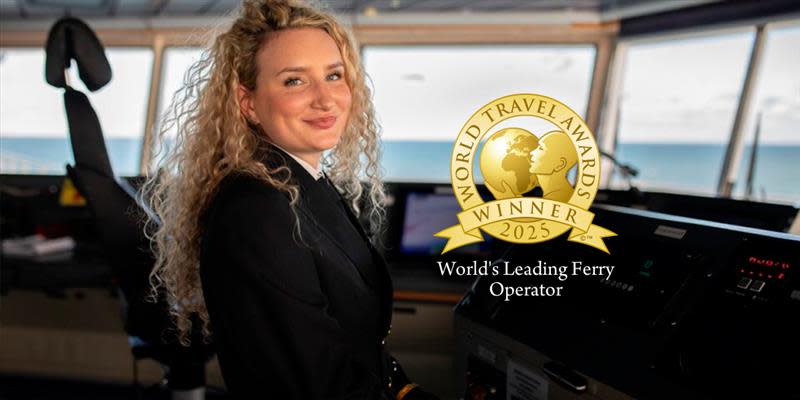
Family holiday with a car
Road trips - reborn family entertainment
Recently, there has been a growing popularity of car travel around the world. The pandemic and ever-changing restrictions on crossing borders have made it more difficult for people to leave their countries, leading to an increasing choice of car travel.
"This type of travel is not new, it was the most popular way for families to travel in the United States in the 1960s, which was later replaced by air travel. And the story of the popularity of car trips, sunset and rebirth is very interesting, it also reflects the cultural and social issues of different eras, ” says Neringa Sinkevičienė, Head of Marketing Campaigns at DFDS.
Start of car trips
The first long-distance car journey was recorded in Germany in 1888, when Berta Benz, the wife of Karl Benz, the inventor of the car, travelled about 106 km on a German road from Mannheim to Pforzheim on an experimental model of Benz motor. At that time, the car was able to develop a speed of just 16 km / h, so the journey lasted almost 7 hours. The woman left with her two sons, and her husband knew nothing of such wife's plans. After successfully returning home, Bertha Benz said she had travelled to visit her mother, but the trip is now thought to have been a well-planned promotional gimmick for the Benz motor, as cars were only used for short distances at the time. Planned or not, such an advertising campaign was particularly successful, as the family business flourished and gave way to the car company Mercedes-Benz.
Neringa Sinkevičienė says that the mass popularity of car travel is associated with the United States, where the first car trip took place in 1903, when the doctor and car pioneer Horatio Jackson bet to be able to drive from San Francisco to New York in less than 60 days. Together with mechanic Sewall Crocker and a dog named Bud, they left a Winston Touring car called a Vermont. This model had just 20 horsepower and was fully loaded with items needed to repair and survive the vehicle. Until then, no one had been able to cross the country so quickly, as cars often broke down, there was a lack of roads adapted to cars, and the ones were paved with stones, followed more often by carriages and by pedestrians. Such trips were further complicated by the lack of stops along the roads, so travellers could not refuel or have a snack. Jackson, Crocker, and Buddha sometimes had to survive without food for even a few days while travelling. The team reached the finish line 63 days after the start of the trip. Such bet cost them $ 8,000 (now almost $ 250,000).
XX a. In the early 1990s, U.S. road infrastructure changed and improved rapidly. In the 1930s, the famous Route 66 was almost completely paved, connecting the east and west coasts. It led to the unification of the state, translated into prosperity, and gave people the opportunity to broaden their horizons. The first travellers to drive their own cars not only wanted to go on vacation, but also to try out the new road networks and see further afield in the country. The cautious growth of car travel continued until the beginning of World War II.
Family vacation - on four wheels
According to Neringa Sinkevičienė, the boom in car travel is associated with the fact that more and more Americans were able to buy their own car. In the 1960s, about 75% of North American families already had cars, and the United States was the largest carmaker in the world. Cars have become no longer a prestigious commodity, but also a means of work, the main means of family transportation. According to V. Klumbis, the attitude of the society also changed: the soldiers who returned after the war already knew that the world was full of goods worth seeing. Due to the good economic situation, many families had personal vehicles and were able to go on holiday for several weeks. So travelling by car was a frequent pastime. They drove all day, stopping to see various tourist attractions, playing travel games, socializing, and camping on the roadsides in the evening. Popular travel by car has helped other businesses to flourish: roadside cafes (especially the fast food industry), gas stations, hotels, and sometimes even cities on the fringes of major roads.
In the 1960s, with the advent of the hippie movement, car and bus travel became a way of life for young people. They turned their vehicle into wheeled houses and, in groups, travelled all over the country. The hippie movement has taken over the whole world, lifestyle and hostility to the war have gained many followers, making car travel popular outside the United States.
Rediscovering the old
However, at the end of the 20th century, interest in car travel dropped. In the 1980s, the aviation industry became more reliable and flights began to become cheaper. Flying by plane was a sign of prestige - more and more people could afford a flight financially, so car travel became obsolete and it seemed that it would never be able to compete with the opportunities offered by cheap flights to travel around the world.
According to Neringa Sinkevičienė, travel experts have been noticing that vacationing on wheels is back in fashion since 2020. The revival of car travel has been accelerated by a global pandemic: with severe restrictions on air travel and strict isolation requirements for departing tourists, more and more people have chosen to travel by private vehicle.
“Travellers in the car feel they have more control on the road, can stop and explore the interesting places along the way, strengthen the connection with those travelling together and enjoy adventures and experiences. Having rediscovered the pleasure of such trips, they can also enjoy the conveniences provided by modern technologies and infrastructure, ”says Neringa Sinkevičienė.
Now that you no longer have to follow a paper map or fear to have enough fuel, and there are ferries crossing the seas and accommodation can be found in advance, car travel has become much easier and more convenient. There is also no need to worry about a 63-day trip. With modern cars and a developed network of highways, it takes about 45 hours to drive across the United States from the west to south coasts (3366 km). "It would take 60 hours to drive Europe from north to south by car, and Germany can be reached in just 19 hours by sailing the DFDS ferry from Lithuania," reminds Neringa Sinkevičienė. Let the road trip begin!
Our routes

Proudly named the World’s Leading Ferry Operator
We did it! We retained our titles as both Europe’s Leading Ferry Operator and the World’s Leading Ferry Operator again in 2025.
We were also once again recognised as having the best website in our industry – scooping both the European and World awards in 2025.
A heartfelt thank you to everyone who voted, and to our passengers, colleagues and partners who contribute to our continued success – we couldn’t do it without you all.



